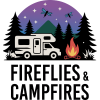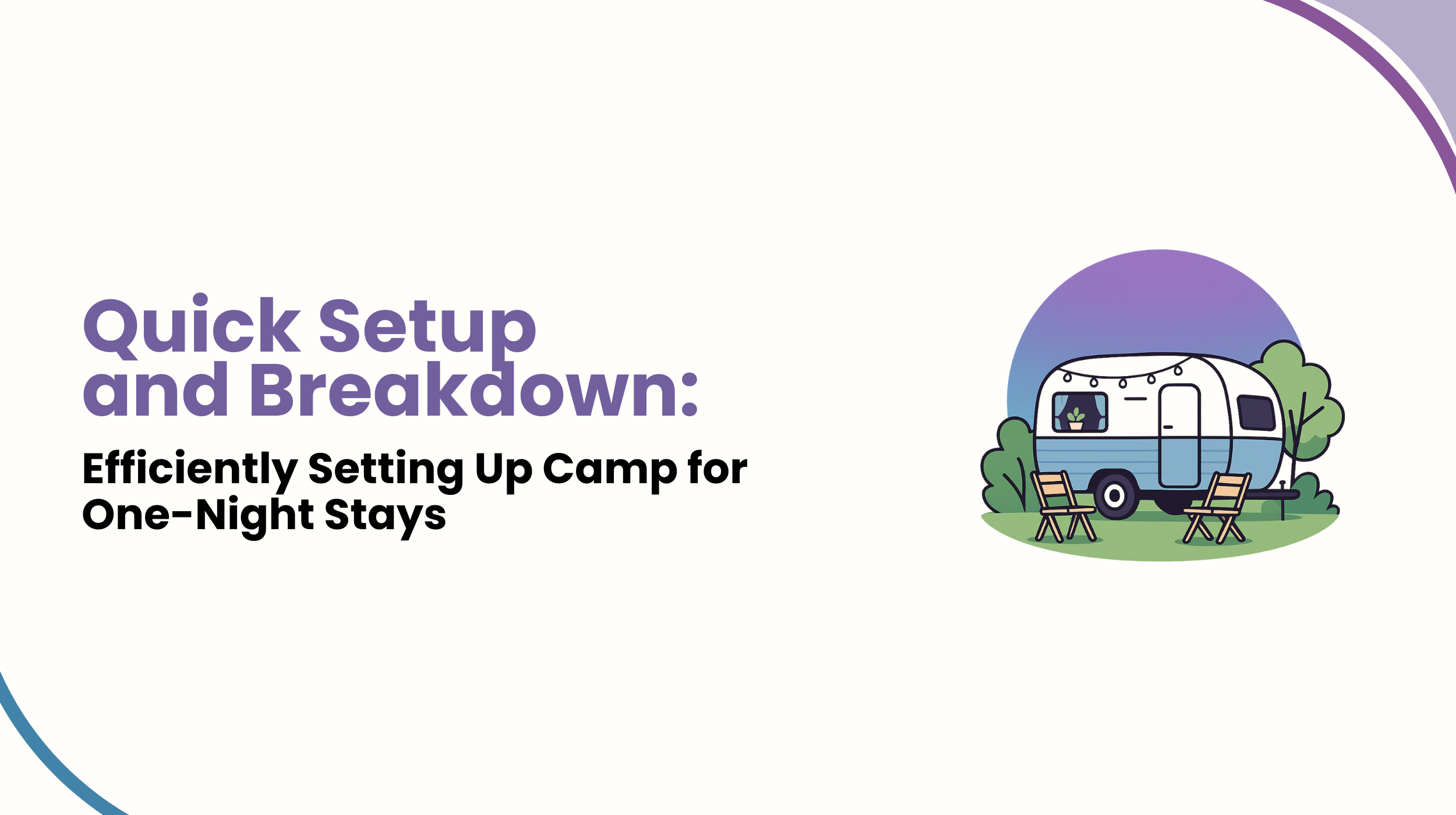Traveling by RV brings freedom and flexibility, which sometimes means you only stop for one night. Whether you’re en route to a bigger destination or just squeezing in a quick weekend getaway, a one-night stop should be simple, efficient, and stress-free. The goal is to set up the basics quickly, skip the extras, and enjoy your evening without spending more time on chores than necessary.
In short: focus on the essentials. Connect only what you truly need, avoid unnecessary gear, and create a morning routine that lets you hit the road fast. This guide walks you through how to streamline your arrival, stay, and departure so your one-night RV stop is as smooth as possible.
Setting Up Quickly Upon Arrival
The key to a successful one-night RV stay is a fast, focused setup. You’re not staying long, so don’t treat it like a full vacation install.
Park & Level Fast
The moment you arrive, pick the most level-looking spot within your assigned site. If the campground offers pull-through sites, take advantage; it saves time and makes departure easier the next morning. Backing in? Take your time with alignment, but don’t overthink it. You want to be reasonably straight, close enough to hookups, and safe from tree limbs or hazards.
Once parked, level your RV. Use auto-leveling systems if your rig has them, or manual leveling blocks and a bubble level if not. The goal isn’t perfection, just enough that you’re not rolling out of bed or spilling coffee off the counter.
Connect Essentials Only
Skip the full suite of hookups. For a short overnight stay, most travelers only need electricity. Hook up your power cord to run your lights, keep the fridge cold, and use heating or air conditioning.
If you have an onboard bathroom and a full fresh water tank, you may skip hooking up to the water altogether. Alternatively, if the site has potable water nearby, connect that too. Sewer hookups can wait unless your tanks are full or you plan to use a lot of water. Connecting the sewer takes time and adds teardown steps, so save it for the morning or skip it entirely.
Minimal Unpacking
Resist the temptation to unpack everything. You don’t need the full outdoor kitchen, the bike rack, or a dozen decorative lights. Set up just what you’ll use, a couple of camp chairs, and maybe a small table for dinner or drinks.
Skip the awning unless you’re expecting rain or strong sun. It might not be worth the extra effort if you’ll only be out there for a short while. Keep things simple and save yourself the hassle of packing everything back up at dawn.
Breaking Camp Efficiently Before Departure
Just like setup, the teardown process should be streamlined for a fast getaway. The goal is to get back on the road with minimal fuss while still ensuring you’re packed up safely and completely.
Pack Up the Night Before
After dinner or your evening wind-down, start preparing for departure. Roll up the awning if you extended it. Store the camp chairs and fold away the table. Anything that doesn’t need to be used in the morning should get packed up at night. If you brought out your leveling blocks, consider removing them now and sleeping with the slides in, if you’re comfortable.
If your RV has stabilizer jacks, retract them before bed if it’s safe to do so quietly. The less you need to do in the morning, the faster you can hit the road. Consider locking up outside compartments, checking tire pressure, and gathering trash for a morning dump station visit.
Quick Morning Routine
Keep your morning routine low-key. Brew a quick cup of coffee or grab a granola bar, but skip cooking a full breakfast unless you’re staying later in the day. Aim for a breakfast you can clean up with one napkin and toss the trash away easily.
Inside the RV, make sure everything is secure. Latch cabinets, lock the fridge, secure the TV if it’s mounted on a swivel, and put away any loose items that might fall during transit.
Dump and Disconnect Swiftly
If you skipped the sewer hookup during setup, now’s the time to handle your waste tanks. Drive over to the dump station, connect your sewer hose, and empty both gray and black tanks. Do this efficiently, clean up the area afterward, and stow your hose neatly using a hose caddy or tote.
Unplug your power cord and coil it up properly, then disconnect the water hose if you used it. Use quick-connect fittings to save time and avoid wrestling with stubborn threads. Store everything in its designated compartment so you’re not fumbling later. Walk around the rig once more to ensure all compartments are locked, your tow vehicle is ready, and steps or stabilizers are stowed.
Helpful Gear for Speedy Setups
Having the right gear can make a huge difference when your stop is short. These tools save time, reduce frustration, and make your life a whole lot easier on the road.
Leveling Blocks or Ramps
Not all RV sites are created equal. Sometimes, even a cement pad is sloped just enough to cause sleeping discomfort or fridge issues. Keep a set of stacking leveling blocks or drive-on ramps handy so you can fix the problem in just a few minutes.
Quick-Connect Fittings
Threading water hoses manually is a pain, especially when they’re cold, stiff, or kinked. Quick-connect fittings let you snap water lines and filters on and off in seconds. They also reduce wear and tear on your hose ends.
Cord and Hose Organizers
Keeping your power cords, water hoses, and sewer hoses tidy in labeled bags or bins helps you find what you need fast. Plus, they coil easier when not tangled or stored loose in a compartment.
Headlamp
When arriving after sunset or packing before sunrise, a headlamp keeps your hands free and your connections visible. You can also use it inside dark compartments to double-check hookups, valves, or storage bins.
What to Do if You Arrive Late or Need to Leave Very Early
RV life isn’t always on a perfect schedule. Maybe you had a long driving day and pulled in well after dark. Or maybe you need to hit the road at sunrise. Either way, it’s still possible to be efficient and courteous.
Late Arrival
If you know ahead of time that you’ll be getting in late, call the campground to let them know. Many parks will leave your check-in materials outside the office or send an after-hours code.
When you arrive, be respectful of other campers. Use low lighting, no honking or loud music, and keep voices down. Skip setup noise like hammering leveling blocks or cranking stabilizers. Just plug in the electricity, make sure your rig is safe and level, and save the rest for the morning. Use your headlamp to avoid blasting area lights.
Early Departure
An early start can be peaceful if you prepare the night before. Store all outdoor gear, hook up your tow vehicle if allowed, and leave only the power cord connected overnight.
In the morning, keep noise to a minimum. Avoid running a generator if possible, and don’t idle your engine for too long. If you’re using headlights, angle them away from neighboring RVs or switch to parking lights while doing a final walk-around. Grab a simple breakfast and coffee, do a quick systems check, and get rolling.
When you’re only staying one night, the name of the game is efficiency. With a little planning and a minimalistic approach, you can park, set up, sleep, and hit the road again in record time. The more you practice this quick setup routine, the faster and smoother it becomes.
Remember: focus on just what you need. Electricity, a level rig, and maybe a chair or two. Leave the elaborate setups for longer stays, and enjoy the freedom that comes with a streamlined camping style.
Whether you’re chasing the next national park or heading home after a weekend escape, knowing how to camp efficiently for one night turns every stop into a stress-free part of the journey.

